Basil pesto or Pesto alla Genovese is an Italian sauce made from fresh basil leaves, parmesan cheese, pecorino sardo cheese (optionally), pine nuts, garlic, olive oil, and salt. It makes literally everything taste better. It’s very easy to make at home and tastes so much better than store-bought basil pesto!
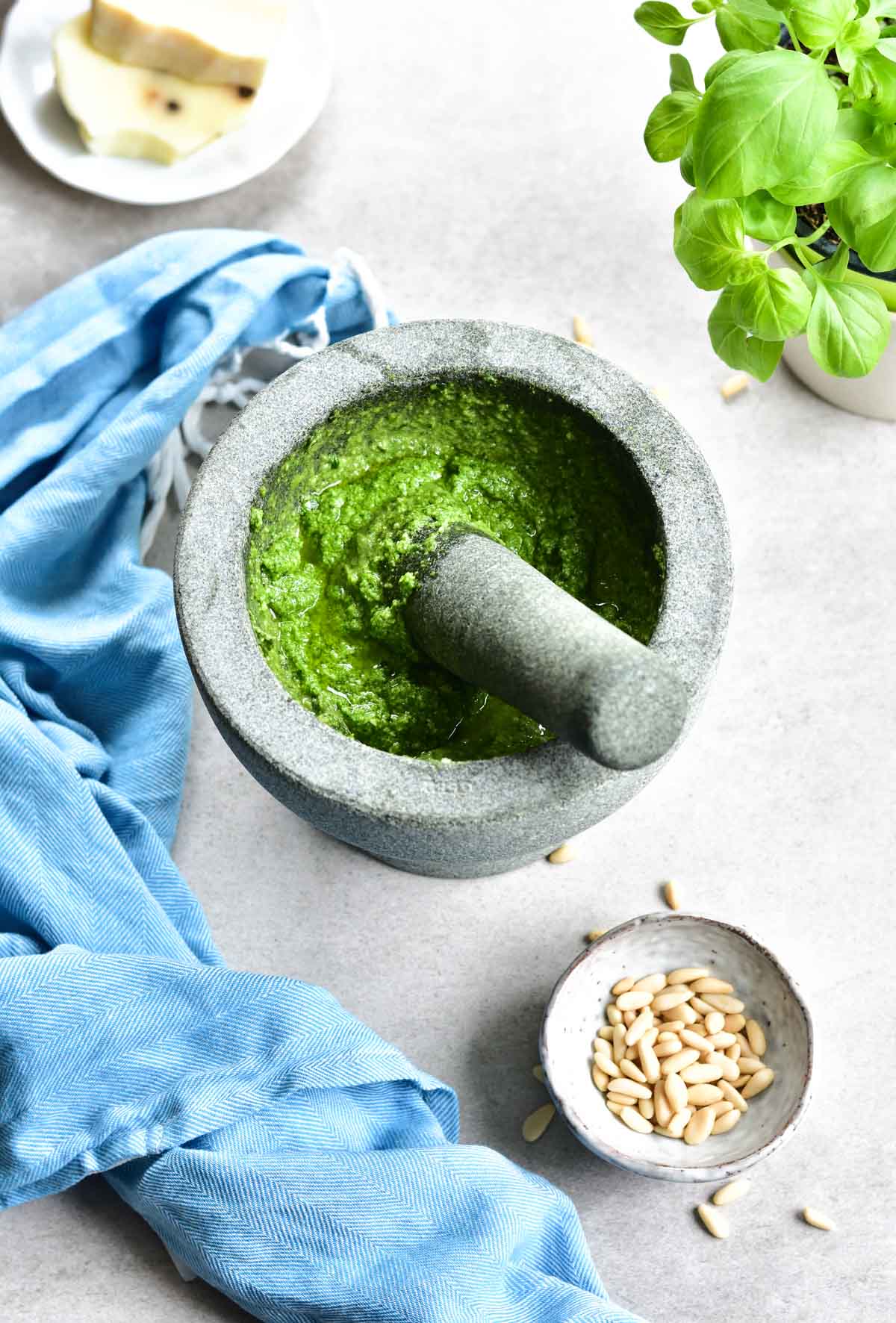
Basil pesto sauce
Basil pesto or Pesto alla Genovese is an Italian sauce that originated in Geneva. The name ‘pesto’ comes from the Italian word ‘pestare’, meaning to pound or to crush, as according to the tradition, pesto is prepared using a mortar and pestle. You can easily make it in a food processor, though.
Homemade pesto tastes so much better. It‘s healthier (it’s not pasteurized) and can be made from the best quality and fresh ingredients. That means: olive oil, not sunflower oil, a larger amount of basil, parmesan cheese and not grana padano or some other cheese types.
I have been making homemade pesto for a long time, always adding the ingredients by ‚feel‘. I always liked it very much, but trying to write down all the ingredients for you, I decided to browse the Internet and do research in Italian cookbooks to read how it really should be made.
Ingredients
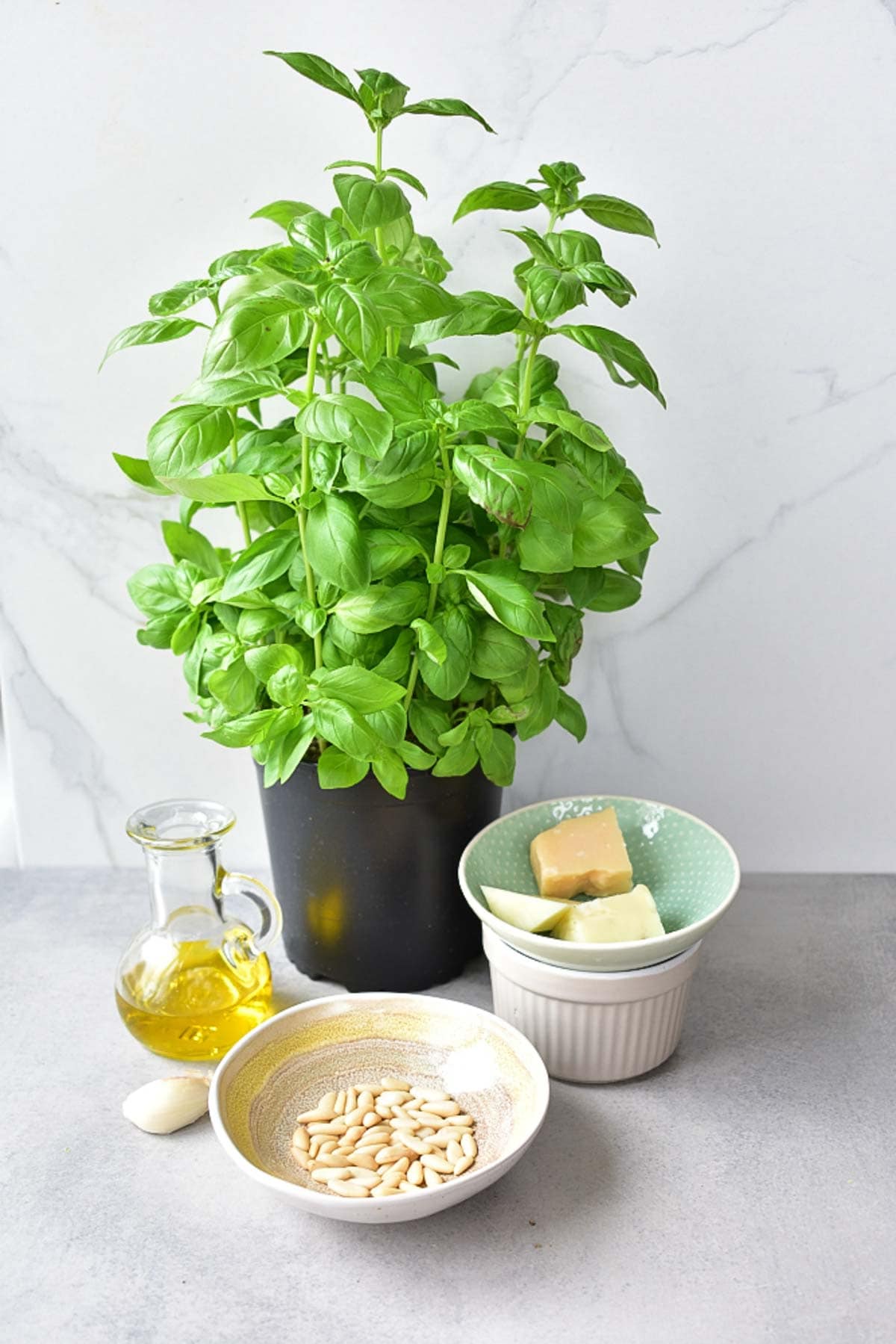
As for the ingredient ratios, it turns out, that until now I have been making a cheese sauce, not a basil sauce 😉 To get the very best pesto, you really need a lot of basil. The pesto should be intensely basil-flavored, with a delicate cheese flavor.
Cheese – you can make the pesto with just parmesan cheese. Italian recipes often call for a mix of parmesan and pecorino cheese. Pecorino cheese is a sheep’s milk cheese that has an intense flavor but it’s similar to parmesan cheese. It’s used to make another famous Italian dish – spaghetti cacio e pepe. If I’m making pesto with both types of cheeses I go with 1/3 of pecorino and 2/3 of parmesan ratio.
Nuts – you don‘t need to toast them on a dry pan, like some recipes are suggesting. Pesto is so flavourful that you can‘t taste the difference and it‘s a shame to use an extra dish for this purpose. Authentic recipes call for pine nuts, but basil pesto is equally good with almonds or even walnuts.
Olive oil – preferably with a delicate, floral flavor (in the store-bought jars, you‘ll find most often sunflower oil).
Preparation method
According to the tradition, pesto is prepared using a pestle and a mortar. To my surprise, it turned out that making pesto in a mortar and pestle is not as difficult or labor-intensive as I thought. During the week, after work, I‘ll probably use a food processor, but on the weekend, a pestle and mortar – why not!
Pestle and mortar vs food processor/blender:
Pesto made in a mortar really tastes better, all the ingredients are better combined and more flavorful. It also has to do with the fact that the olive oil mixed at high speed in a food processor can become bitter. Until now, I didn‘t believe it. This time I made 2 batches of pesto, with the same ingredients, one portion in a blender and one in a mortar and pestle. I was really shocked. The pesto made in the food processor was clearly more bitter. Other people in my household couldn’t spot the difference so I guess some people are more sensitive than others! Nevertheless, from now on, I pulse all the pesto ingredients without the olive oil together, then add the olive oil and pulse it in food processor over very low speed or I whisk it in by hand.
What kind of mortar and pestle is best:
A few more words about the mortar and pestle, if you are wondering if it‘s worth buying. If you want to buy one, just buy a big and heavy granite or marble mortar and pestle. With the small and light
Besides making pesto, I also use the mortar and pestle to:
– prepare Thai curry pastes
– to crush spices (like fennel seeds for my ricotta meatballs, black pepper for spaghetti cacio e pepe, caraway seeds for liptauer spread, and chai latte spices).
– make pistou – this is French sauce very similar to Italian pesto, it’s used to make Pistou soup, one of my favorite soups ever!
How to make basil pesto step by step:
Using a pestle and mortar:
It’s important to add all the ingredients in a particular order! Start with washing the basil leaves in cold water and patting them dry with paper towels.
First, pound the garlic and pine nuts into a paste. Add the basil leaves, a pinch of coarse salt (optional), and lemon zest (if using), pound until only small pieces of leaves remain. Add the grated cheese, pound to a thick paste. Add the olive oil and pound until thick emulsion forms. Season to taste with salt and pepper, you can also add more olive oil if you want thinner consistency of your pesto.
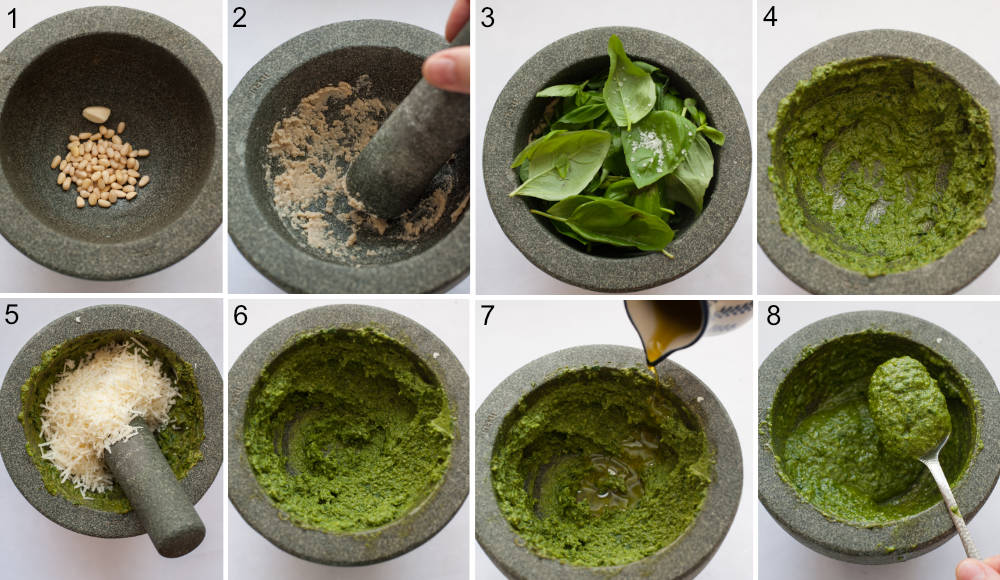
In a food processor:
I must admit, the easiest and quickest way to make pesto in the food processor would be to add all the ingredients and mix until smooth or just slightly chunky (depending on your preferences). It literally takes 2 minutes. You’ll get a little better results though if you won’t mix the olive oil with the other ingredients at high speed.
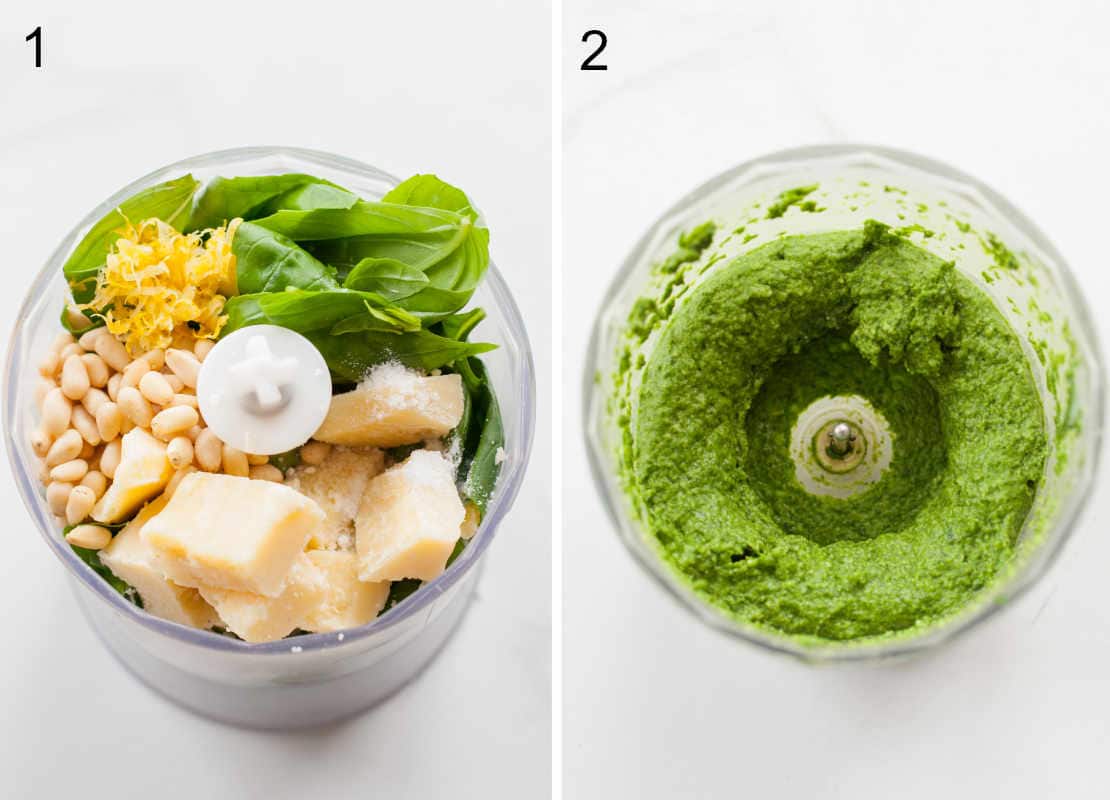
STEP 1: Wash the basil leaves in cold water and pat them dry. Add all the ingredients, except the olive oil, to a food processor bowl.
STEP 2: Pulse until thick paste forms.
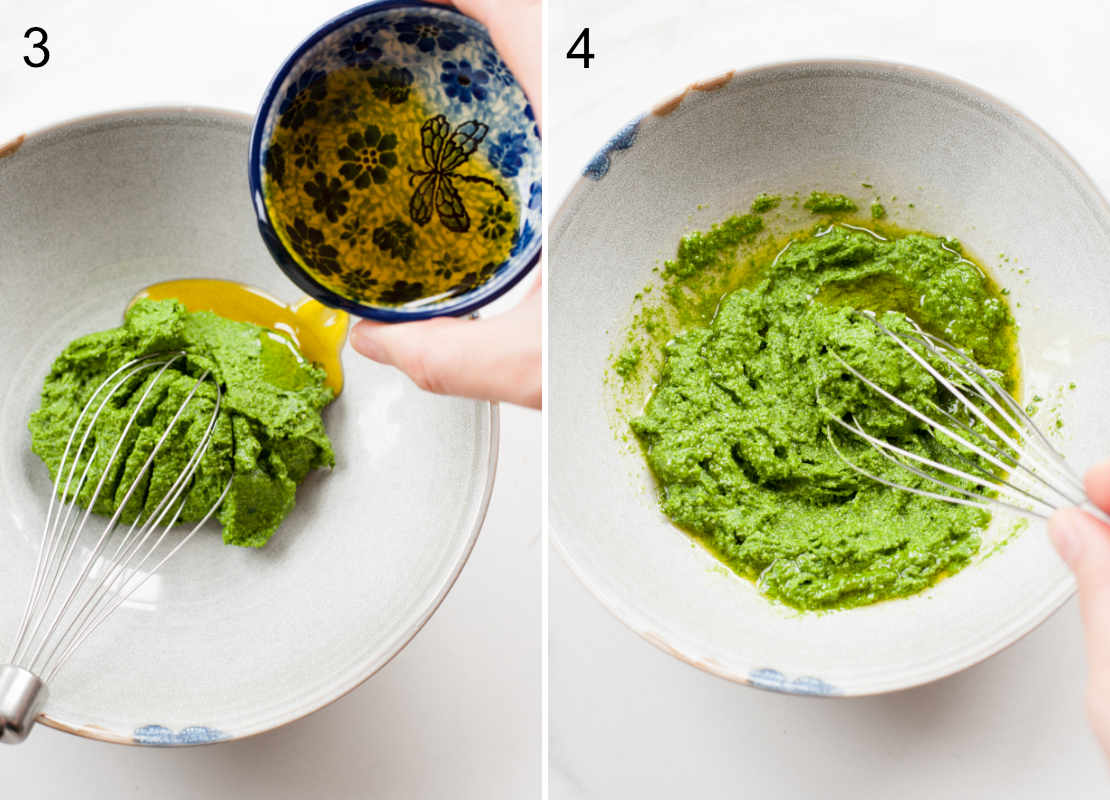
STEP 3: Add the olive oil and pulse slowly at the low speed or whisk in the olive oil by hand, until thick sauce forms.
STEP 4: Season to taste with salt, you can also add more olive oil if you want thinner consistency of your pesto.
Basil pesto uses (ways to use pesto)
Pesto makes everything taste better! Its uses are countless.
- I like it most as a pasta sauce, like in this recipe for chicken pesto pasta bake, shrimp zucchini pasta with pesto or Parsley pesto pasta with zucchini and carrots. It could be also added to this Caprese pasta.
- To spread on toast, bruschetta, focaccia, sandwich, flatbread or panini.
- To spread on pizza (after it has been baked).
- Mix it into dips.
- Make pesto potato salad (with lemon basil pesto sauce!)
- As a salad dressing (you can thin it more with olive oil or just water), you can add it for example to Caprese salad (mozzarella, tomato, and basil salad). I also like to make a simple arugula salad with tomatoes, small mozzarella balls, and basil pesto dressing.
- Toss on top of steamed / fresh / roasted veggies.
- As a sauce for a burger.
- Add it to a vegetable soup (like Pistou soup).
- You could make savory crepes/pancakes and fill them with veggies and use pesto as a sauce.
- Use it as a sauce to serve with fish or chicken.
- Serve it with ravioli.
- Scoop them over vegetable quiche/tart like this asparagus quiche.
- Use it to make puff pastry Christmas tree.
Here you’ll find all my ideas and recipes with pesto.
Basic pesto recipe – how to make pesto out of anything!
Did you get tired of basil pesto? You can make pesto out of almost everything! There are so many different options, all are delicious. I urge you to try for yourself what you like and adjust the ingredient proportions to your liking!
BASIC PESTO RECIPE:
1. greens / vegetables: basil, parsley, spinach, radish leaves, carrot leaves, celery leaves, arugula/rocket, kale, wild garlic/ramp leaves, sun-dried tomatoes, fresh tomatoes (yes! in Pesto alla Trepanese), bell peppers
2. cheese: parmesan, pecorino, or other hard cheese, or even creamy ricotta (Pesto alla Calabrese)
3. oil: extra virgin olive oil, or other delicious and healthy extra virgin vegetable oils, for example: linseed oil, walnut oil, avocado oil, pumpkin seed oil, you can also mix them together
4. nuts: you can really use all nuts and seeds, the best are pine nuts, almonds, walnuts and pistachios, pumpkin seeds
5. seasonings: fresh garlic, salt, black pepper, chili, lemon zest (really good!)
My other pesto recipes
- parsley pesto
- wild garlic pesto (ramp pesto)
- celery leaf pesto
- arugula pistachio pesto
- sun-dried tomato pesto
- basil walnut pesto
Storage / freezing
The basil pesto will keep up in the fridge for up to 3 days (stored in a tightly closed container or tightly covered with plastic foil). If you want to keep it longer, pour a small layer of olive oil on top of the pesto. This way you can keep it in the fridge for up to a week.
Pesto freezes very well. Put it in a tightly closed container or plastic bag and freeze for up to 6 months.
Did you make this recipe? RATE THE RECIPE or tell me in the COMMENTS how you liked it! You can also add a photo of your dish. It would make me very happy and will help other readers. Thank you!!
Basil Pesto Recipe
Ingredients
- 2 cups (45g) basil leaves (packed) 2 small pots of basil or 1 very large (like on the photo)
- 1/2 cup (45g) Parmesan cheese
- 1 very small clove garlic
- 1 tablespoon (10g) pine nuts or almonds
- big pinch of lemon zest optional
- 3 tablespoons extra virgin olive oil
- salt and pepper to taste
Would you like to save this?
Instructions
In a food processor:
- Wash the basil leaves in cold water and pat them dry.
- Add all the ingredients, except the olive oil, to a food processor bowl. Pulse until thick paste forms.
- Add the olive oil and pulse slowly at the low speed or whisk in the olive oil by hand, until thick sauce forms.
- Note: The olive oil can also be mixed directly with the other ingredients in the food processor at high speed, but the pesto comes out just slightly bitter in my opinion.
- Season to taste with salt, you can also add more olive oil if you want thinner consistency of your pesto.
Using a pestle and mortar:
- Wash the basil leaves in cold water and pat them dry.
- In a mortar, pound pine nuts, garlic, and salt into a paste.
- Add the basil leaves and lemon zest (if using), pound until only small pieces of leaves remain.
- Add the grated cheese, pound to a thick paste.
- Add the olive oil and pound until thick sauce forms. Season to taste with salt and pepper, you can also add more olive oil if you want thinner consistency of your pesto.
- Enjoy!
Notes
- Instead of just parmesan cheese, you can use 2/3 of parmesan and 1/3 of pecorino cheese (the total amount is 1/2 cup).
- Storage: pesto will keep up in the fridge for up to 3 days (stored in a tightly closed container or tightly covered with plastic foil). If you want to keep it longer, pour a small layer of olive oil on top of the pesto. This way you can keep it in the fridge for up to a week.
- Freezing: pesto freezes very well. Put it in a tightly closed container or plastic bag and freeze for up to 6 months.
- BASIC PESTO RECIPE: 1. greens / vegetables: basil, parsley, spinach, radish leaves, carrot leaves, celery leaves, arugula/rocket, kale, wild garlic/ramp leaves, sun-dried tomatoes, fresh tomatoes (Pesto alla Trepanese), bell peppers 2. cheese: parmesan, pecorino, or other hard cheese, or even creamy ricotta (Pesto alla Calabrese) 3. oil: extra virgin olive oil, or other delicious and healthy extra virgin vegetable oils, for example: linseed oil, walnut oil, avocado oil, pumpkin seed oil, you can also mix them together 4. nuts: you can really use all nuts and seeds, the best are pine nuts, almonds, walnuts and pistachios, pumpkin seeds 5. seasonings: fresh garlic, salt, black pepper, chili, lemon zest (really good!)
- Calories = whole recipe. This is only an estimate!

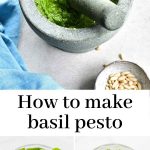

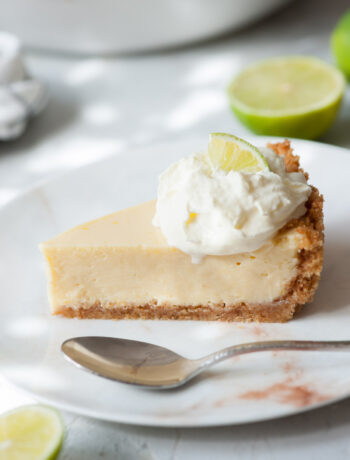

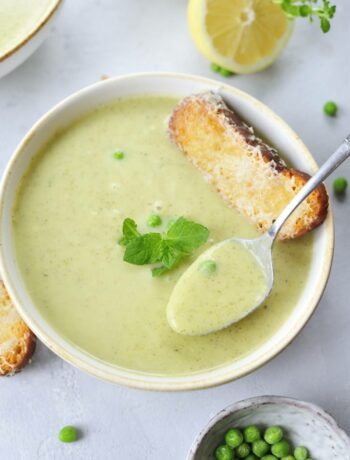
No Comments